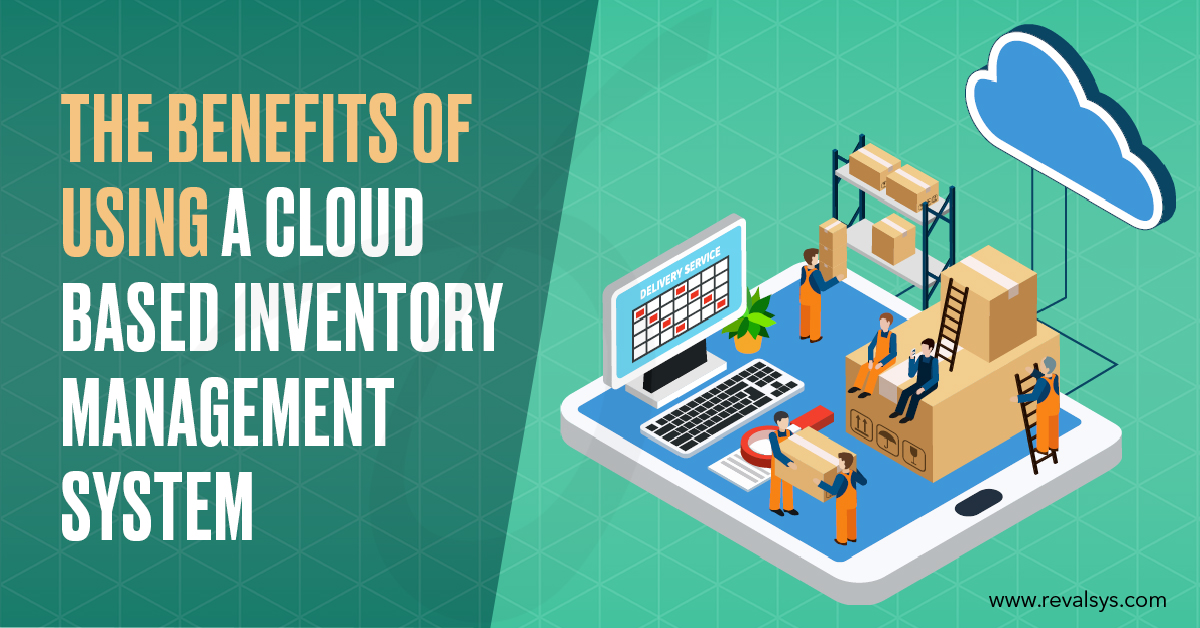Cloud-based inventory management system for small business – Cloud-based inventory management systems are revolutionizing the way small businesses manage their stock. With features tailored specifically for their needs, these systems offer a host of benefits that can streamline operations, enhance collaboration, and drive growth.
From improved accuracy and reduced costs to enhanced communication and real-time insights, the advantages of implementing a cloud-based inventory management system are undeniable. This comprehensive guide will explore the key features, benefits, and best practices of these systems, empowering small businesses to make informed decisions and unlock their full potential.
Key Features of a Cloud-Based Inventory Management System for Small Business

Cloud-based inventory management systems offer a comprehensive suite of features tailored to the needs of small businesses. These features streamline inventory management processes, providing real-time visibility, improved accuracy, and enhanced efficiency.
Leveraging the cloud eliminates the limitations of traditional methods, such as manual spreadsheets or outdated software, offering several key advantages. Cloud-based systems provide remote access, allowing businesses to manage inventory from anywhere, anytime. Additionally, they ensure data security and integrity through robust cloud infrastructure and regular backups.
Core Features
- Centralized Database: A single, comprehensive database stores all inventory data, providing a holistic view of stock levels, product information, and transaction history.
- Real-Time Updates: Automatic updates reflect changes in inventory levels in real time, eliminating the need for manual data entry and reducing the risk of errors.
- Multi-Location Support: Manage inventory across multiple locations or warehouses, providing a consolidated view of stock availability and facilitating seamless transfers.
- Automated Reordering: Set reorder points and minimum stock levels to trigger automatic purchase orders, ensuring optimal inventory levels and preventing stockouts.
- Barcode Scanning: Integrate barcode scanners for quick and accurate data entry, reducing manual errors and speeding up inventory counting and tracking.
- Reporting and Analytics: Generate customizable reports and dashboards to track inventory performance, identify trends, and make informed decisions.
- Mobile Access: Access inventory data and perform key tasks from smartphones or tablets, enabling on-the-go management and real-time updates.
Benefits of Implementing a Cloud-Based Inventory Management System
Integrating a cloud-based inventory management system offers numerous advantages that can significantly enhance the operations of small businesses. These systems provide real-time visibility into inventory levels, streamline communication, and automate processes, leading to improved efficiency and cost savings.
Improved Inventory Accuracy
Cloud-based systems leverage real-time data updates to maintain accurate inventory records. They eliminate the risk of manual errors associated with spreadsheets or outdated software, ensuring that businesses always have a clear picture of their stock levels. This accuracy helps prevent overstocking, reduces the risk of stockouts, and optimizes inventory levels for optimal cash flow management.
Enhanced Collaboration and Communication, Cloud-based inventory management system for small business
Cloud-based inventory management systems foster collaboration and improve communication within small businesses. Multiple users can access and update inventory information simultaneously, ensuring that everyone is on the same page. This eliminates the need for manual data sharing or phone calls, reducing the likelihood of miscommunication and ensuring that all stakeholders have the most up-to-date information.
Reduced Costs and Improved Efficiency
Cloud-based inventory management systems can significantly reduce costs and improve efficiency for small businesses. They eliminate the need for expensive on-premise hardware and software, as well as the associated maintenance and IT support costs. Additionally, by automating processes such as inventory tracking, order processing, and reporting, these systems free up valuable time for business owners and employees, allowing them to focus on more strategic tasks.
Challenges of Implementing a Cloud-Based Inventory Management System

Implementing a cloud-based inventory management system can provide numerous benefits for small businesses, but it also comes with its set of challenges. Understanding these challenges and developing strategies to overcome them is crucial for a successful implementation.
Data Security and Privacy
Cloud-based systems store sensitive business data, raising concerns about data security and privacy. Small businesses may worry about unauthorized access, data breaches, or data loss.
Strategies:
* Choose a reputable cloud provider with robust security measures, including encryption, access controls, and regular security audits.
* Implement multi-factor authentication to enhance account security.
* Regularly back up data to prevent data loss in case of system failures or security breaches.
Best Practices for Using a Cloud-Based Inventory Management System
Cloud-based inventory management systems provide numerous advantages for small businesses. However, to fully leverage these benefits, it is essential to adopt best practices for organizing, managing, and analyzing inventory data. This guide Artikels effective practices to help businesses optimize their inventory operations and maximize profits.
Organizing and Managing Inventory
- Establish a clear inventory structure: Create a well-defined system for categorizing and organizing inventory items, making it easy to locate and track products.
- Use barcode or RFID technology: Automate inventory tracking by implementing barcode or RFID tags, reducing manual errors and improving accuracy.
- Conduct regular inventory audits: Perform periodic physical counts to verify inventory records and identify discrepancies.
- Set up reorder points: Establish minimum inventory levels for each item to trigger automatic reordering when stock falls below a certain threshold.
Optimizing Inventory Levels
Maintaining optimal inventory levels is crucial to minimize waste and maximize profits. Consider the following practices:
- Analyze demand patterns: Track historical sales data to identify seasonal fluctuations and forecast future demand, ensuring adequate stock levels without overstocking.
- Use inventory optimization algorithms: Leverage software algorithms to determine optimal inventory levels based on demand, lead times, and other factors.
- Implement just-in-time (JIT) inventory: Reduce inventory carrying costs by receiving inventory only when needed, minimizing waste and storage space requirements.
Using Reporting and Analytics
Cloud-based inventory management systems provide robust reporting and analytics capabilities. Utilize these features to make informed decisions:
- Monitor inventory turnover: Track the rate at which inventory is sold to identify slow-moving items and optimize stock levels.
- Analyze profit margins: Determine the profitability of different inventory items and make adjustments to optimize pricing and product mix.
- Forecast future demand: Use historical data and predictive analytics to anticipate future demand and plan inventory levels accordingly.
Case Studies and Examples of Cloud-Based Inventory Management Systems
Cloud-based inventory management systems have become increasingly popular among small businesses, offering numerous benefits such as improved accuracy, reduced costs, and enhanced collaboration. Here are some case studies and examples to demonstrate the successful implementation of these systems:
Small Business Case Study:
Company: ABC Retail Store
Industry: Retail
Challenge: Manual inventory tracking led to frequent stockouts and overstocking, resulting in lost sales and increased costs.
Solution: Implemented a cloud-based inventory management system that automated inventory tracking, provided real-time visibility, and optimized stock levels.
Benefits:
* Reduced stockouts by 25%
* Improved inventory accuracy by 90%
* Decreased inventory carrying costs by 15%
Example of Cloud-Based Inventory Management Systems:
Name: Zoho Inventory
Features: Multi-channel inventory management, barcode scanning, order fulfillment, and reporting.
Name: QuickBooks Commerce
Features: Inventory tracking, purchase orders, sales orders, and multi-location support.
Name: NetSuite Inventory Management
Features: Advanced inventory control, demand forecasting, and supply chain management capabilities.
Closure

Embracing a cloud-based inventory management system is a strategic move that can transform the way small businesses operate. By leveraging the power of these systems, businesses can gain a competitive edge, optimize their inventory management processes, and achieve sustainable growth in today’s dynamic business landscape.
Quick FAQs: Cloud-based Inventory Management System For Small Business
What are the key features of a cloud-based inventory management system for small businesses?
Cloud-based inventory management systems offer a range of features tailored for small businesses, including real-time inventory tracking, multi-location management, barcode scanning, reporting and analytics, and integration with other business applications.
How can a cloud-based inventory management system improve inventory accuracy?
Cloud-based systems provide real-time visibility into inventory levels, eliminating the risk of manual errors and ensuring that businesses always have an accurate picture of their stock.
What are the benefits of using a cloud-based inventory management system over traditional methods?
Cloud-based systems offer several advantages over traditional methods, including increased accuracy, improved collaboration, reduced costs, enhanced efficiency, and real-time data access from anywhere.